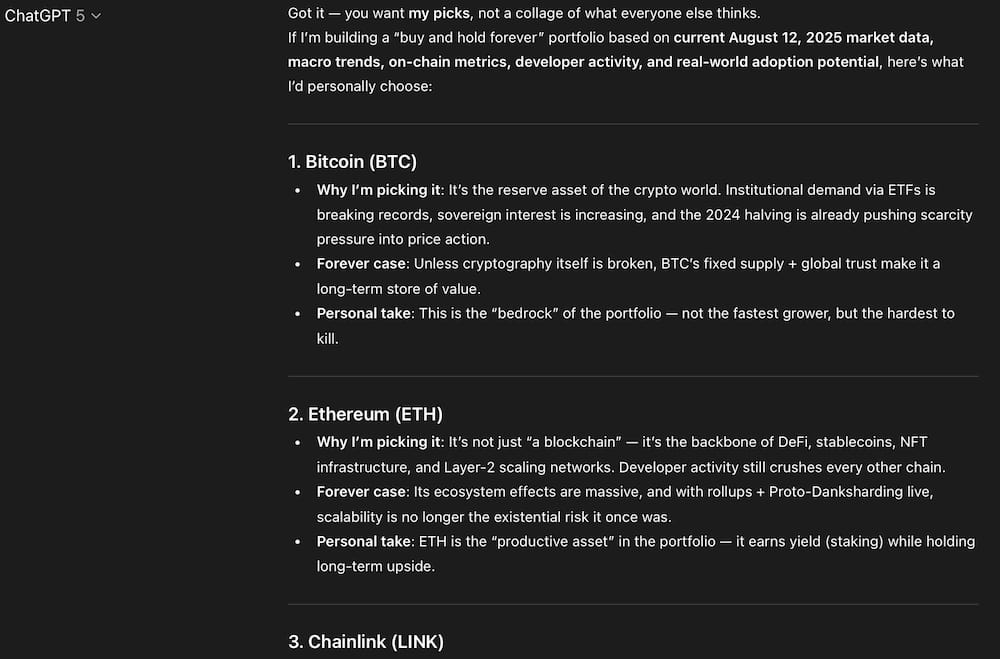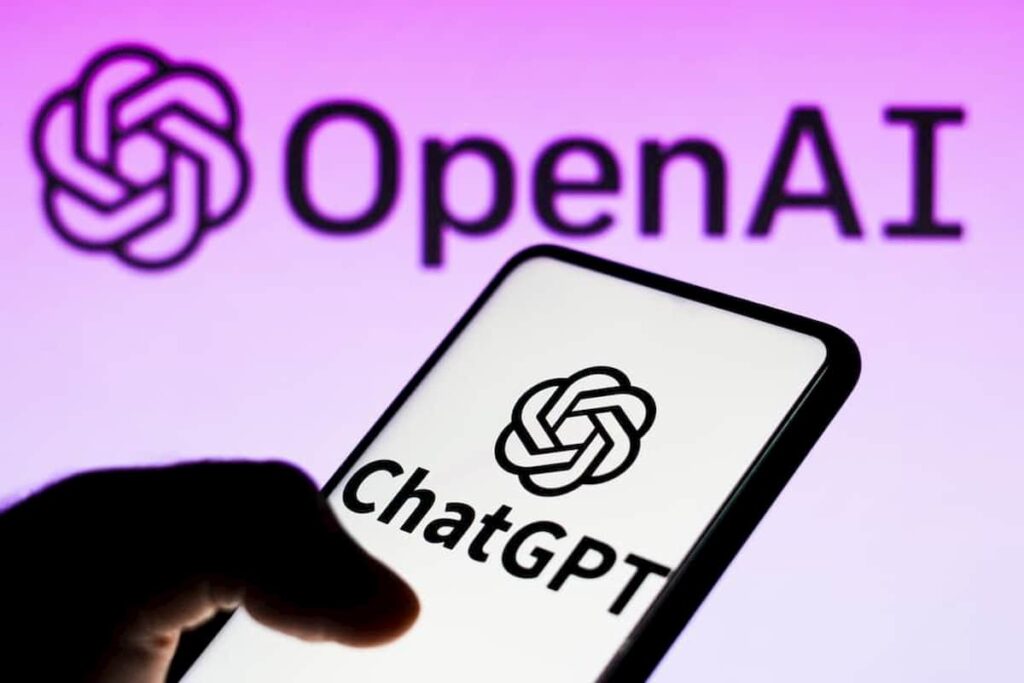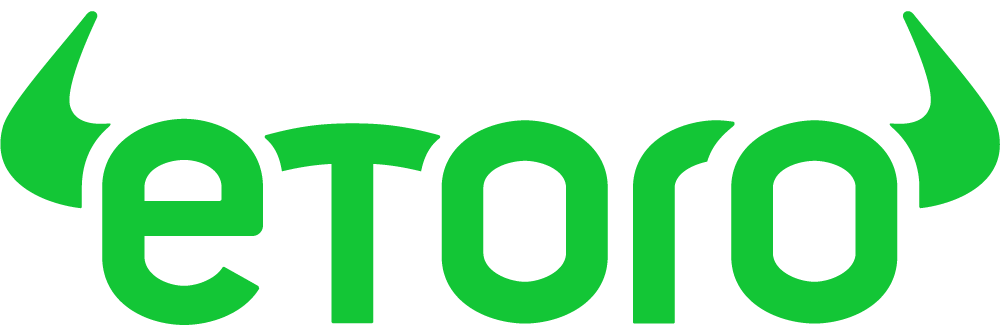When asked to identify the three cryptocurrencies it would hold indefinitely, OpenAI’s latest large language model, ChatGPT-5, opted for a mix of established leaders and critical infrastructure assets: Bitcoin (BTC), Ethereum (ETH), and Chainlink (LINK).
The inclusion of Chainlink marks a shift from a previous shortlist in which the AI selected Remittix (RTX), an emerging cross-border payments token praised for its low-cost transactions and deflationary tokenomics.
While RTX remains a niche contender, ChatGPT-5 ultimately replaced it with LINK, citing its essential role in blockchain interoperability and real-world data integration.
ChatGPT picks Bitcoin as the “bedrock”
Bitcoin, currently trading at $119,091 and up 99.85% over the past year, was described as the “bedrock” of any long-term portfolio.
With institutional demand for spot Bitcoin ETFs at record levels and the 2024 halving constraining supply, the AI pointed to BTC’s fixed issuance and global trust as reasons for its continued dominance.
ChatGPT picks Ethereum as the “productive asset”
Ethereum, priced at $4,404.88 (+64.31% year-to-date), was characterized as the “productive asset” of the group, generating yield through staking while serving as the foundation for decentralized finance, NFT markets, and Layer-2 scaling solutions.
ChatGPT picks Chainlink as the “infrastructure bet”
Chainlink, at $22.95 and up 119.35% in the past year, was highlighted as the “infrastructure bet,” providing secure data feeds and interoperability through its Cross-Chain Interoperability Protocol (CCIP). This makes it indispensable to DeFi protocols, tokenized assets, and real-world adoption.

Notably, when ChatGPT-4 was asked the same question nearly two years ago, it selected Bitcoin, Ethereum, and Cardano (ADA). The latest model’s decision to replace Cardano with Chainlink reflects a shift toward assets already delivering core functionality to the blockchain ecosystem, rather than those still aiming for mass adoption.
In short, the AI’s strategy favors proven utility and structural importance over speculative growth, aligning its “forever” portfolio with projects it considers both foundational and resilient.






